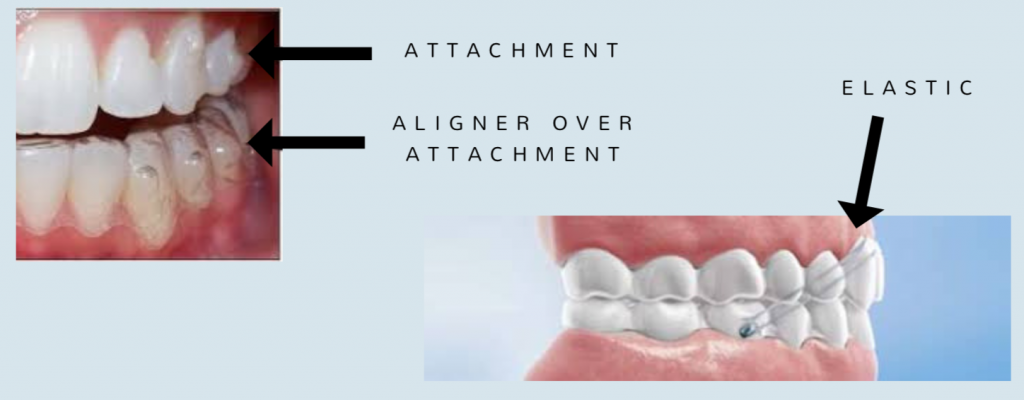Orthodontics is a specialty within the broader field of dentistry. Orthodontists diagnose and treat irregularities of the teeth and jaws.
When your teeth and jaw are not perfectly aligned, you can experience pain as well as a greater susceptibility to serious oral health issues like gingivitis and periodontal disease. An orthodontist has completed the necessary additional education and training to restore proper alignment to your teeth and jaws.
- A smile I can feel proud to show off
- Increased self-confidence and reduced self-consciousness
- Improve chewing functions and reduce risk of oral disease
- Better overall oral hygiene into the long-term
- Less wear and tear on teeth and gums
- Optimal adult tooth and jaw alignment
- Improved results from other forms of dental and orthodontic care
- Presence of overbite (upper teeth cover lower teeth when jaw is closed)
- Presence of underbite (the reverse)
- Presence of open bite (teeth do not touch when jaw is closed)
- Presence of cross bite (teeth do not meet evenly when jaw is closed)
- Uneven gaps between teeth or tooth crowding/overlapping
- Teeth that protrude forward or back
- Baby teeth that do not fall out on schedule
- Ongoing issue with thumb (or finger) sucking past age 4
- Bite does not line up evenly down the center of the mouth
- Obvious tooth wear and tear
- Pain, grinding or difficulty chewing food
- Jaw joint shifts, locks or slides out of socket
The American Association of Orthodontics recommends children visit an orthodontist by age 7. This is because permanent teeth typically start to erupt at this age and misalignment in teeth and jaws can be detected early and perhaps treated more easily.
This is a term that refers to childhood or adolescents receiving orthodontic care. The two phases are called Early Interceptive Treatment and Comprehensive Orthodontic Treatment, respectively.
Phase I typically takes place between the ages of 7 and 10, is of one year duration or less and is limited to adjustments deemed necessary to discourage early life habits like thumb-sucking and ensure optimal placement of arriving adult teeth.
Phase II usually begins once most, if not all, permanent adult teeth have arrived (often between the ages of 11 and 13).
- Oral problems caught earlier are often easier and more affordable to resolve.
- Certain tooth and jaw alignment issues may be avoided with early intervention.
- There is a decreased risk for injury to front teeth when protrusions are corrected quickly.
- Bad oral habits, such as thumb-sucking or finger sucking, can be caught early. If left untreated, these oral habits can lead to speech impairments and an increased tendency for poor dental and skeletal development.
- There is a measurable correlation in children and teens between improved facial appearance and improved self-esteem and self-confidence.
- Early Phase I treatment can also shorten Phase II treatment.
It is never too late in life to enjoy the positive health results of orthodontic treatment. While dental and facial smile esthetics rank high on the list for most adult orthodontic patients, the health benefits are even far more advantageous. Achieving ideal occlusion (bite) allows for better chewing function and less wear on teeth and jaw joints. Aligning teeth allows for less food impaction, ease of brushing and flossing, and therefore minimizes the chance for cavities.
Braces are often installed to aid in correcting misalignment of teeth and jaws. Today’s braces technology is quite advanced and gentle. In fact, there are only two main parts to today’s braces: the tooth brackets themselves and the arch-wire that connects the brackets together. The arch-wire does the heavy lifting in terms of gently but persistently moving your teeth into perfect alignment for optimal oral health.

Clear aligner therapy, such as Invisalign, has made many advancements over the years and can now be used for most patients as well. A digital scan is taken of your teeth and Dr. Fernandez will be able to digitally treatment plan your case based on your x-rays, digital scan, and photos. The aligners, also known as trays, incrementally move your teeth. The trays are removable and should be worn 20-22 hours of the day. Small tooth-colored attachments may be cemented to your teeth to provide extra anchorage to better move your teeth. In addition, interproximal reduction (IPR) may be done to slenderize some your teeth should additional space be needed.
The time can vary from patient to patient. In general, you can plan for anywhere from 18 to 24 months from treatment start to finish. As with any treatment, the more you participate in the treatment plan and maintain excellent oral hygiene, the quicker treatment is likely to proceed and the more pleased you will be with the results.
Installation of the brackets and arch-wire is not painful. What can be mildly uncomfortable is the slight, gentle movements initiated by the arch-wire placement and following orthodontic adjustments. Any noticeable discomfort or soreness can be alleviated with over-the-counter pain relief and application of topical wax as needed.
In general, braces will not interfere with sports or other active hobbies you may enjoy. However, for your own safety, orthodontists generally advise wearing a mouth guard when playing contact sports.
Yes, you can! The only change may be the need for some initial minor adjustment to your mouth position for reed or breath-based instruments.
For the best results from orthodontic treatment, you should continue to attend your regularly scheduled dental appointments.
Proper oral hygiene is more important than ever when you are undergoing orthodontic treatment. Be aware it may take a bit longer to brush and floss, but it will be worth it when you see the finished result.
Today’s modern braces will not cause damage to your teeth. The one exception is if you do not properly brush and floss, which can then cause some staining that only becomes visible when the braces are removed.
